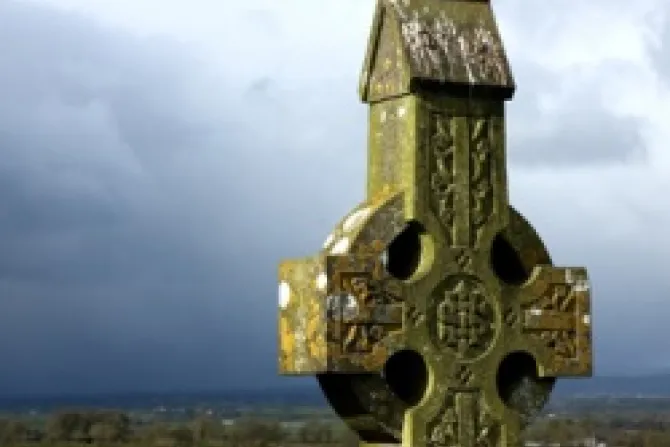Dublin, Ireland, Jun 11, 2014 / 01:04 am
Distorted claims about the burials of hundreds of children who died at an Irish home for unwed mothers show a trend of "exaggerations and myths" about injustices in the country's Catholic past, one commentator charged.
The truth about the hundreds of children allegedly buried in a septic tank "was a very different story to the fact-lite, fury-heavy tale that had already gone round the world," said Brendan O'Neill, editor of Spiked Online.
O'Neill made his remarks in a June 9 editorial about news coverage of the Bons Secours Sisters' St. Mary's home for unwed mothers, which operated in Tuam in the twentieth century.
"Clearly this isn't about news anymore; it isn't a desire for facts or truth that elevated the crazed claims about Tuam up the agenda; rather, a mishmash of anti-Catholic prejudice, Irish self-hatred and the modern thirst for horror stories involving children turned Tuam into one of the worst reported stories of 2014 so far," he said.
"The transformation of Ireland's past into a cesspit of human wickedness that modern Irish historians and assorted Catholic-bashers can dip into in search for stuff to stand up their contemporary prejudices inevitably leads to the skewing of facts."
O'Neill responded to media coverage about the work of a local historian, Catherine Corless, who researched the unmarked burials of 796 babies and young children who died at the Tuam home during its years of operation from 1925 to 1961. The children died at a rate of about 23 per year.
The reports focused on the burial of the children in unmarked graves, with much coverage focusing on claims that some bodies were interred in a former septic tank.
O'Neill said that the facts in the case have been wildly distorted.
"The septic tank or the grounds of the former home have not been excavated. No babies have been 'found in a septic tank', as the Washington Post, The Guardian and others claimed. The claim that the babies were 'dumped' into some kind of sewage system is wrong, too," he said.
Corless has also clarified her research, telling the Irish Times that she never said the bodies had been "dumped."
Some bodies were reportedly uncovered by children in the 1970s. One of the children, Barry Sweeney, recounted the discovery he made at the age of 10 when he and another child lifted a concrete slab in the burial grounds. He said he saw about 20 unwrapped skeletal remains laid haphazardly in the crypt. Corless speculated that the crypt was a former septic tank.
O'Neill countered several depictions of Corless' research in the media.
"The claim that the babies were 'dumped' in a tank is not true, according to Corless herself. And the notion that the babies were hurled in with sewage is not correct – apparently the tank had been turned into a crypt," he said.
O'Neill noted exaggerated reactions to the piece in prominent media outlets that compared the Tuam home to the Nazi Holocaust and the Rwandan atrocities.
"What madness is this? How did speculation that some children out of 796 might have been buried in a former septic tank become news headlines about 800 dead children having been found in a septic tank, leading to comparisons being made between Ireland's old nuns and the architects of the Nazi Holocaust?"
"There is no doubt that life was grim in that home in Tuam, as it was across the west of Ireland in the early to mid-twentieth century," O'Neill acknowledged. He noted the "depressingly high" infant mortality in early 20th century Ireland, particularly due to the spread of infection in institutions.
He said that the Ireland of previous centuries was "sometimes a harsh and unpleasant place" and the Catholic Church "undoubtedly" mistreated some women and children it cared for.
"But the unhealthy obsession over the past 10 years with raking over Ireland's past has little to do with confirming such facts and instead has become a kind of grotesque moral sport, providing kicks to the anti-Catholic brigade and fuel to the historical self-flagellation that now passes for public life in Ireland."
O'Neill said that claims of large-scale abuse at industrial schools and the Magdalene Laundries have also been called into question.
The women inmates of the laundries included orphans from abusive or neglectful homes, elderly women without other support, homeless women, women with physical or mental disabilities or mental health problems, women who had committed petty crimes and women who had given birth out of wedlock.
A government report about the laundries found that the "vast majority" of the girls were not physically punished and found no cases of sexual abuse, O'Neill said. One of the most popular books about the laundries, Kathy O'Beirne's "Don't Ever Tell," which claimed she was raped and abused in other ways at the laundries, has also been exposed as fraudulent.
Another government report about the abuse of boys in Catholic-run schools found 68 allegations of rape over an 85-year period. News coverage exaggerated this figure to report that "thousands" had been raped.
"If as many myths were spread about by a government in relation to a war or something, there would be outrage, demands for an inquiry; why is it okay, then, to promote half-truths, non-facts and embellishments about the Irish Catholic Church?" O'Neill asked.
The reports about the burials at the Tuam home have prompted a response from Catholic authorities.
Archbishop Michael Neary of Tuam said he welcomed a government investigation of the accusations. He said he was "greatly shocked" and "horrified and saddened" by the numbers of children buried in the graveyard, noting the "great suffering and pain" likely suffered by the children and their parents.
Corless' research is aiding the creation of a memorial for the dead children.
Archbishop Neary said his archdiocese will continue to work with the Bon Secours Sisters and the local community to commemorate the dead and their families with a memorial prayer service and a plaque.


